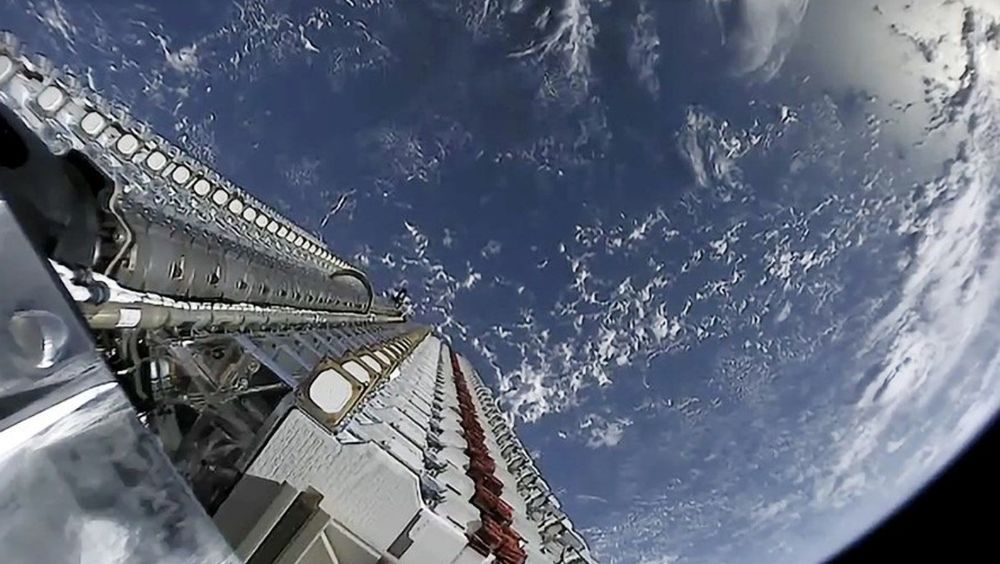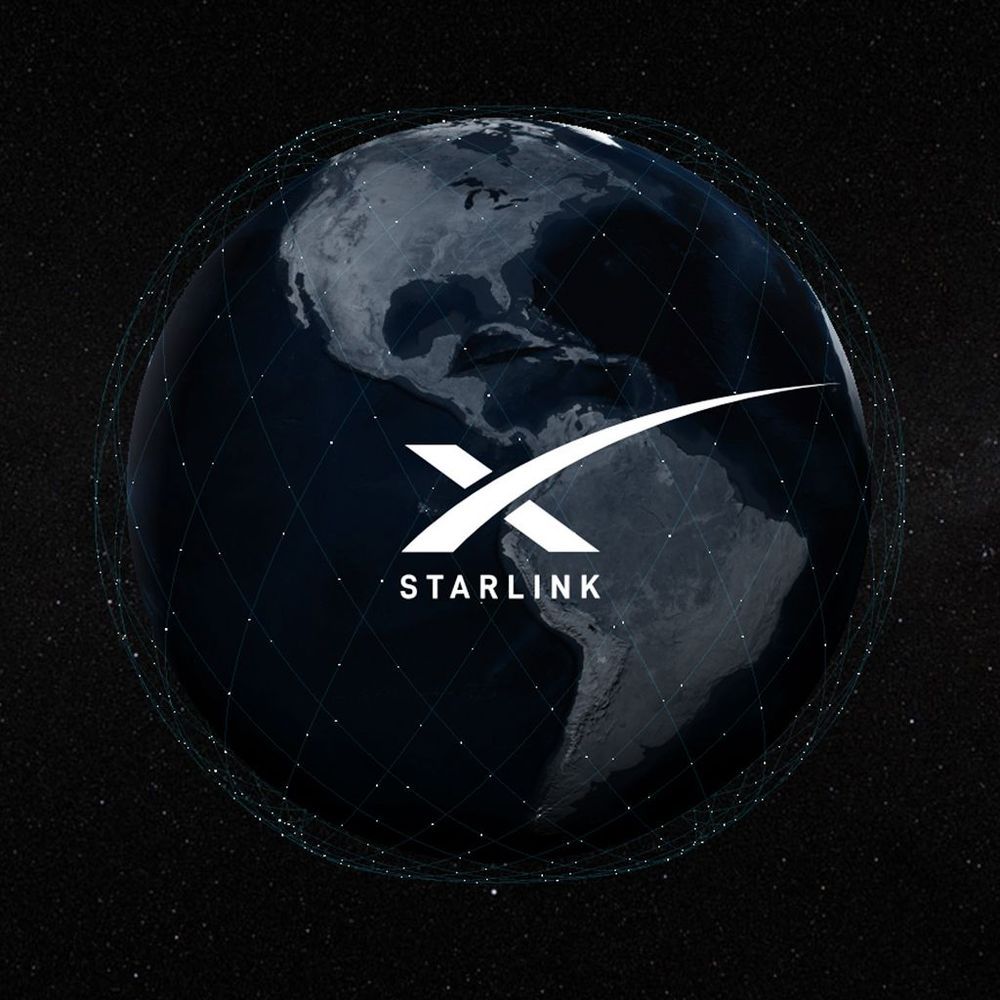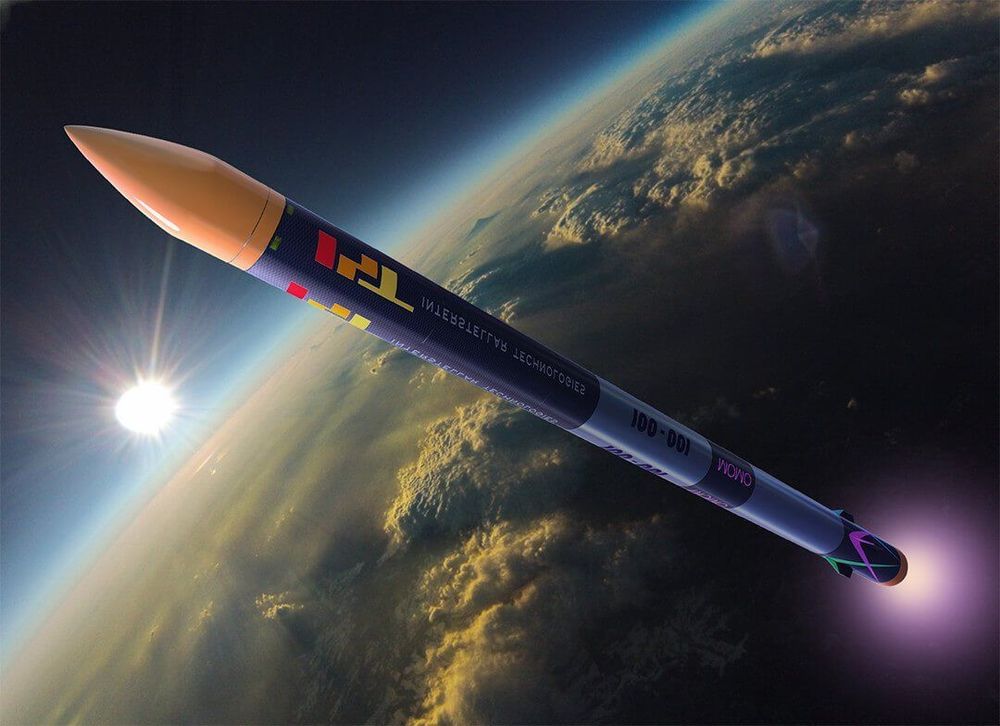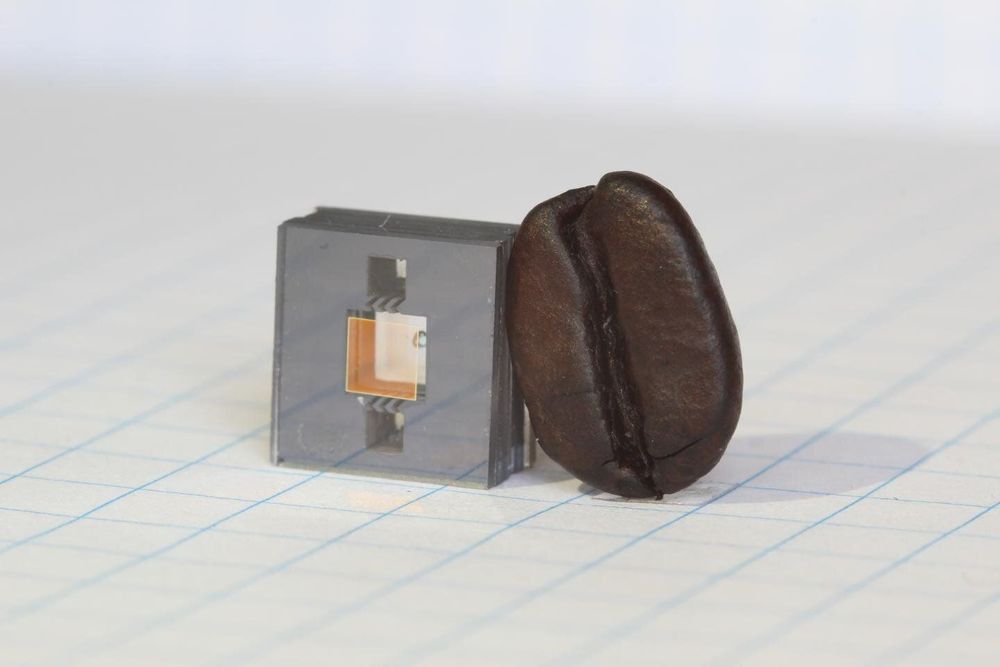Archive for the ‘satellites’ category: Page 150

Mark Handley (UCL, University College London) has simulation showing the orbits of various SpaceX Starlink satellite constellations. There are simulations of 72, 264 and 11927 satellites. SpaceX is launching 60 satellites at a time. SpaceX has 60 production Starlink satellites in orbit now for testing.
SpaceX plans six more launches of Starlink satellites by the end of the year and should have enough for an initial 720 satellites for North America, Europe and Asia service by March or April 2020.
May 28, 2019
SpaceX’s bright Starlink satellites are upsetting astronomers
Posted by Michael Lance in categories: internet, satellites
SpaceX launched 60 internet satellites last week and their bright appearance has caused concern amongst astronomers, who say plans for 12,000 of them could ruin the night sky.
May 25, 2019
An astronomer in the Netherlands captured stunning video of 60 Starlink satellites zooming across the sky
Posted by Alberto Lao in category: satellites
A stunning video shot by a Dutch astronomer captured a string of roughly 60 Starlink satellites zooming across the night sky, one day after they were launched into orbit.
The video shows the “train” of satellites speeding in a straight line as they orbit around the earth.
The astronomer, Marco Langbroek, wrote in a blog post that he had calculated the search orbit himself to find out when they would pass by, and “stood ready” with his camera. The train zoomed by within three minutes of his predicted time.
May 25, 2019
Wow! This Is What SpaceX’s Starlink Satellites Look Like in the Night Sky
Posted by Genevieve Klien in categories: Elon Musk, satellites
In the video, SpaceX’s Starlink satellites pass overhead like a string of pearls, a brilliant trail of moving lights in the night sky. SpaceX launched the satellites into an initial orbit 273 miles (440 kilometers) above Earth. They are making their way to a final orbit 342 miles (550 km) up.
SpaceX CEO and founder Elon Musk hinted on Twitter today that the satellites are doing well. “So far, so good,” he wrote.
Langbroek said he used the knowledge of SpaceX’s deployment altitude and target orbital inclination (the angle of the orbit with respect to the equator) to estimate where the satellites would appear in Friday night’s sky.
Continue reading “Wow! This Is What SpaceX’s Starlink Satellites Look Like in the Night Sky” »
May 25, 2019
SpaceX Starlink Will Equal Launch Revenue in 2020 and Will Make Elon the World’s Richest Person by 2023
Posted by Klaus Baldauf in categories: Elon Musk, finance, satellites, sustainability
SpaceX has successfully deployed sixty production versions of the Starlink Satellite. They are targeting six Starlink launches through the next six months. Those six launches will place 360 Starlink satellites into orbit. The pace of Starlink launches will increase with six more launches by the end of April 2020. This will enable SpaceX to generate a lot of revenue for service to North America, Europe and Asia. The revenue will be from reducing latency in financial trading communication.
SpaceX and Elon Musk will be made financially secure by 2023 and will have the $20 billion per year budget of NASA. If Elon has a 30X on his 54% share of SpaceX, then with Elon would have 30 times $10 billion in 2024 (50% of $20 billion in 2024). This means Elon would be worth over $300 billion without including any valuation for Tesla.
If Tesla still had any financial issues, Elon would be able to lend money from SpaceX to Tesla by late 2020 or 2021. Elon used Tesla to buyout Solarcity. In 2018, financial analysts speculated that Elon could his SpaceX stake as collateral in a buyout of Tesla. If SpaceX is worth $100 billion late in 2020 and then $200 billion in 2021, Elon would easily be able to fund a Tesla buyout with his $54 billion and then $108 billion of SpaceX (versus about $15 billion today).
May 24, 2019
SpaceX Just Unleashed 60 Starlink Satellites Into Orbit
Posted by Quinn Sena in categories: internet, satellites
SpaceX just successfully let loose 60 of its tiny Starlink satellites, intended to bring internet broadband connectivity to people across the globe. While it’s a good start, the Elon Musk-led space company still has its work cut out to truly bring internet to all.
“In a year and a half, maybe two years, if things go well, SpaceX will probably have more satellites in orbit than all other satellites combined — a majority of the satellites in orbit will be SpaceX,” Musk said during a conference call last week, as quoted by Space.com.
Successful deployment of 60 Starlink satellites confirmed! pic.twitter.com/eYrLocCiws
Continue reading “SpaceX Just Unleashed 60 Starlink Satellites Into Orbit” »
May 23, 2019
Starlink: SpaceX is targeting Thursday, May 23 for the launch of 60 Starlink satellites from Space Launch Complex 40 (SLC-40) at Cape Canaveral Air Force Station, Florida
Posted by Klaus Baldauf in category: satellites
SpaceX is developing a low latency, broadband internet system to meet the needs of consumers across the globe. Enabled by a constellation of low Earth orbit satellites, Starlink will provide fast, reliable internet to populations with little or no connectivity, including those in rural communities and places where existing services are too expensive or unreliable.
May 20, 2019
Japan just sent a privately-funded rocket into space for the first time ever
Posted by Genevieve Klien in category: satellites
SpaceX is already a household name around the globe, but there’s no shortage of other startups vying for their slice of the private spaceflight pie. Companies like the Jeff Bezos-led Blue Origin are doing some pretty impressive things, and a relatively new startup out of Japan just hit a big milestone as well.
The company, named Interstellar Technologies Inc, launched its MOMO-3 rocket into space over the weekend, reaching an altitude of over 100 kilometers before running out of steam and tumbling back down to Earth. The rocket, which is part of the company’s long-term plan of providing satellite launch services to commercial partners, is built using many parts that are readily available from a variety of manufacturers.
May 17, 2019
NIST team demonstrates heart of next-generation chip-scale atomic clock
Posted by Quinn Sena in categories: computing, particle physics, satellites
Physicists at the National Institute of Standards and Technology (NIST) and partners have demonstrated an experimental, next-generation atomic clock—ticking at high “optical” frequencies—that is much smaller than usual, made of just three small chips plus supporting electronics and optics.
Described in Optica, the chip-scale clock is based on the vibrations, or “ticks,” of rubidium atoms confined in a tiny glass container, called a vapor cell, on a chip. Two frequency combs on chips act like gears to link the atoms’ high-frequency optical ticks to a lower, widely used microwave frequency that can be used in applications.
The chip-based heart of the new clock requires very little power (just 275 milliwatts) and, with additional technology advances, could potentially be made small enough to be handheld. Chip-scale optical clocks like this could eventually replace traditional oscillators in applications such as navigation systems and telecommunications networks and serve as backup clocks on satellites.
Continue reading “NIST team demonstrates heart of next-generation chip-scale atomic clock” »
















